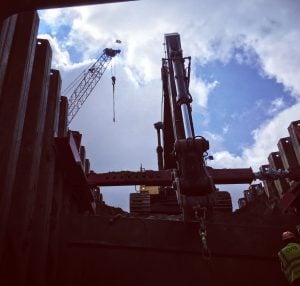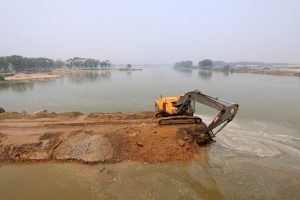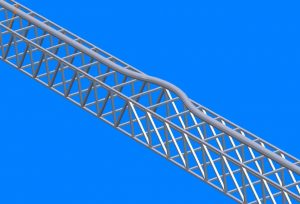When shoring is mentioned, new buildings typically come to mind. However, shoring is also frequently used to support existing buildings, either because the building is failing or building modifications are being performed. While supporting existing buildings utilizing standard shoring equipment performs the same function as new construction—the approach to the design and installation oftentimes is entirely dissimilar.
Shoring existing structures can be a tricky business and the older the building, the trickier it can become. Many older structures have unreliable drawings or none at all of the existing construction. Additionally, many buildings go through generations of remodel including additions, renovations, and improvisations that are not always properly documented. In fact, without proper documentation it becomes difficult to determine the location of the load bearing members in an existing building and consequently complicates the designer’s shoring design and analysis. Simply stated, if the location and magnitude of the loads are unknown, it is impossible to safely and economically design a shoring system.
Qualifications and Requirements
As with scaffolding, all shoring must be designed by a qualified person. Additionally, the services of a qualified engineer will most likely be required, particularly if columns and footings are removed. Load transfer from columns can easily reverse the stresses in the adjacent beams; if the shoring isn’t placed correctly, and any excessive stresses mitigated, structural components and the shoring equipment may be compromised to the point of failure.
Items the engineer will require before initiating a shoring design and analysis include the type of work being performed, the boundaries of work, distance to any excavation, dimensions of the building, and location of load-bearing members. Other pertinent information includes the dead load of the supported area and any anticipated live loads— for example, will an office building remain occupied or will the parking garage remain operational during construction?
Depending on the scope and duration of the project, snow and wind loads may also need to be taken into account. Be certain to consider any special circumstances like required access openings within the shoring equipment and the sequencing of the work which could affect the shoring towers. While drawings, schematics, and photographs can be provided to convey most of this information, in some cases it is easier and more cost effective for the engineer designing the shoring plan to visit the site.
Improper Techniques Can Prove Catastrophic
The consequences of an improperly shored existing structure can be, and usually are, catastrophic. Reports of partially or completely collapsed structures are common and are typically the result of either a poor or non-existent design produced by an unqualified person.
Simply sticking a few shoring posts under the joists and beams in a random fashion, based “on experience,” does not a good shoring plan make! Worse yet is the construction crew that installs various posts in an ill-defined manner, only to be surprised by creaks and groans of a structure that is ready to fail. While the structure is talking to them, they misread the message, only to find that total collapse is imminent.
To avoid such an experience, providing accurate and complete information to your shoring designer will eliminate the risk of collapse and ensure an accurate, safe and economical project. Don’t take chances, if in doubt get a qualified professional engineer involved and maximize your chances of shoring success!













